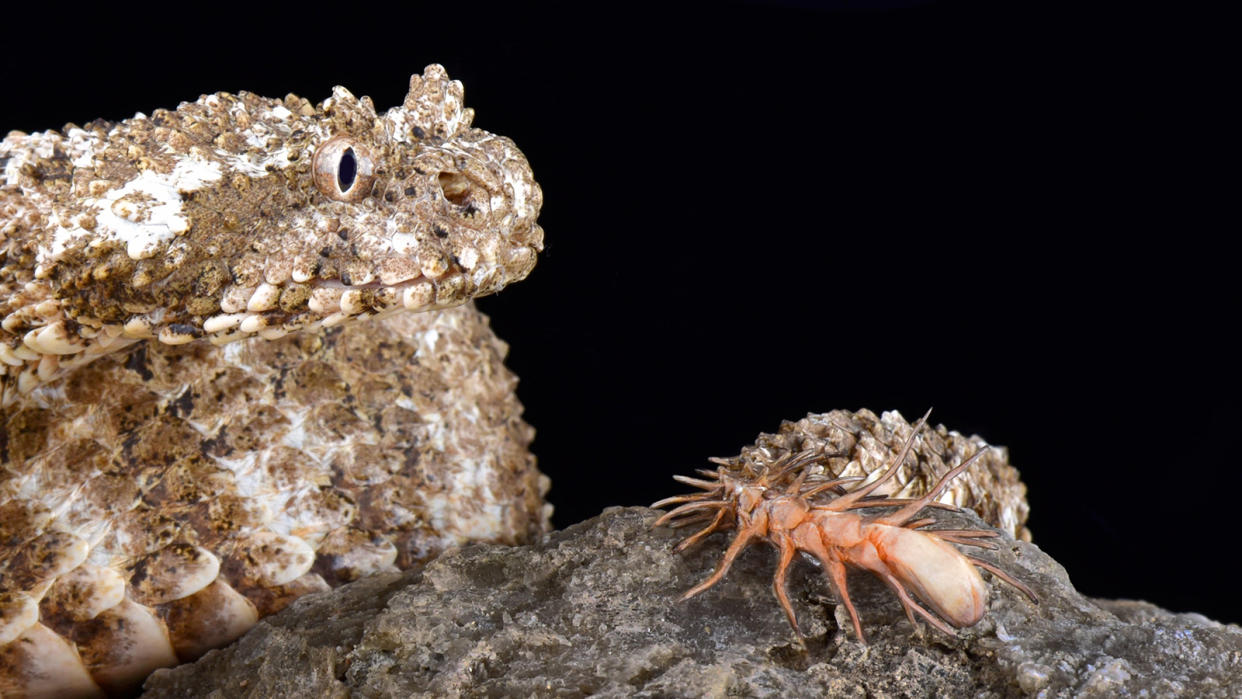How the Spider-tailed Horned Viper Tricks Unsuspecting Prey

There probably aren't many animals as aptly named as the spider-tailed horned viper. With a tail tip that resembles a spider and horns atop its head, it's easy to visualize this venomous snake.
And this reptile doesn't just stop at interesting looks — there's a reason why in "The World's Most Atrocious Animals," children's book author Philip Bunting jokingly changed its scientific name from Pseudocerastes urarachnoides to Sssneakeus ssswindleus.
Characteristics of a Spider-Tailed Viper
Named a new species in 2006, a spider-tailed viper's tail resembles a spider. In the 1970s, when scientists came across the reptile, also known as the Iranian spider viper, they believed its tail was a mutation until they saw more horned vipers.
It shares similarities with other Pseudocerastes species, but it is hard to confuse because of its tail. Aside from elaborate tail ornamentation, it has another distinct characteristic: its horned appearance.
Measuring between 19.6 inches (50 centimeters) and 25.6 inches (65 centimeters) in length, it is a moderately sized snake that weighs about 1 pound. The scaly snake is gray or tan and is adept at camouflage.
Persian Horned Viper
While similar in size, the spider-tailed viper is not the same species as the Persian horned viper, also known as the false horned viper. Belonging to the Pseudocerastes species, it has horns but not a unique tail.
The horned adder is another snake that has horns but no spider-like tail.
Natural History of Spider-tailed Horned Vipers
Part of the genus Pseudocerastes, the spider-tailed horned viper's lives in western Iran and eastern Iraq, particularly in the Zagros Mountains. Its natural habitat includes cliffs and mountainous terrain. The diurnal animal is venomous.
The Spider-tailed Horned Viper's Diet
Like the green tree python, the spider-tailed horned viper is an ambush predator. The snake preys on unsuspecting birds and does it in the sneakiest way possible.
"It's not actually a mutated spider on this viper’s tail," Sami Bayly writes in "A Curious Collection of Dangerous Creatures." "It's an evolutionary adaptation that acts as a fleshy lure to attract prey. The snake mimics the movements of a spider, wiggling its tail about and moving the 'legs.' When a bird comes close to peck at the 'spider,' the viper springs out and catches its meal."
Like the rattlesnake rattles, the viper has an elaborate caudal lure (the movement of its tail). That said, it does not work on local birds who have caught on to the viper's way.
Instead, the horned viper will lure a migrating bird, particularly insectivorous birds. Their venom affecting amphibians and not birds, however, might suggest that toads are an important food source.
One study reads:
"It is noteworthy that the venom had strong procoagulant activity on the toad plasma. This result was unexpected as toad plasma demonstrated generally low reactivity and P. urarachnoides is said to feed exclusively on birds... As the diet of juvenile P. urarachnoides is largely unknown, toads may form an important part of their diet. Future studies assessing the venom composition of juvenile snakes in parallel with their ecology are required."
Original article: How the Spider-tailed Horned Viper Tricks Unsuspecting Prey
Copyright © 2024 HowStuffWorks, a division of InfoSpace Holdings, LLC, a System1 Company


